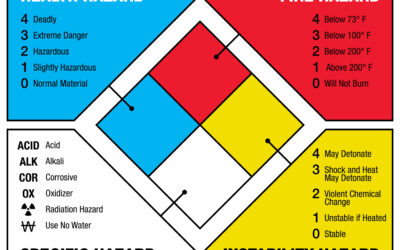In the past, schools and workplaces have relied on fire alarms to notify occupants to evacuate in the event of an emergency. Alarm systems remain an important piece to any building’s emergency alert system. However, recent research has shown that a fire alarm alone may not be enough. In many cases, fire emergencies are mistaken for drills. This false sense of security causes slow reaction times and a lack of urgency.
Fire Alarms Alone are not Enough
This problem was recently addressed by the National Fire Protection Association (NFPA). The NFPA has updated their Fire Alarm and Signaling Code to ensure more effective communication and action during emergencies. A 2013 publication from Human Communication Research notes that fire alarm systems are the most effective way to notify occupants of an emergency; but establishing urgency through two or more additional emergency alert messages is often necessary.
Am I up to Code?
The International Code Council (ICC) as well as many other governing bodies have adopted the recent updates of NFPA 72 code. It requires that mass notification safety systems provide reach, clarity, redundancy, and reporting/monitoring. Additionally, the Americans with Disabilities Act (ADA) ensures that all persons have the ability to receive and understand messaging and receive direction to safety.
Emergency alert professional and VP of Marketing at Lencore David Smith recently elaborated on the new NFPA guidelines and recommendations in an article for Campus Safety Magazine. Smith shows his support for the new code’s emphasis on redundancy.
The methods used when putting these new regulations into practice may be dependent on a number of variables. These include weather conditions as well as the use and layout of your buildings. For many, smart devices have proven to be an effective mode of communication when emergency alerting. However, its important to take into account cell tower reception and the WiFi dependability of your facilities. Also, not everyone in your buildings may have access to a smart device to receive your emergency alerts. Desktop notifications, television alerts, and audio alerts are also options to take into consideration.
All emergency action plans should contain clear, accessible and readable evacuation maps, security maps, and severe weather sheltering maps. Even with access to maps and emergency action plan information, all occupants need to be aware when an emergency is taking place. This is why a strong emergency alert system and plan is essential for any building.
Emergency Alert Strategies you can Implement
Does your emergency action plan contain three or more modes of communication? If not, consider adding some of these emergency alerting tools to your EAP.
- Fire Alarm
- SMS alerts
- Smartphone emergency alerting app
- Visual desktop alerts
- Visual television alerts
- Intercom audio alerts
- Paging systems
- Strobe light alarms
- Email alerts
Don’t be afraid to think outside the box to find the emergency alert system that works best for your organization.
More Info
Effective Mass Notification Can Influence Campus Community Response to Emergencies (Campus Safety)
National Fire Alarming and Signaling Code (NFPA)





